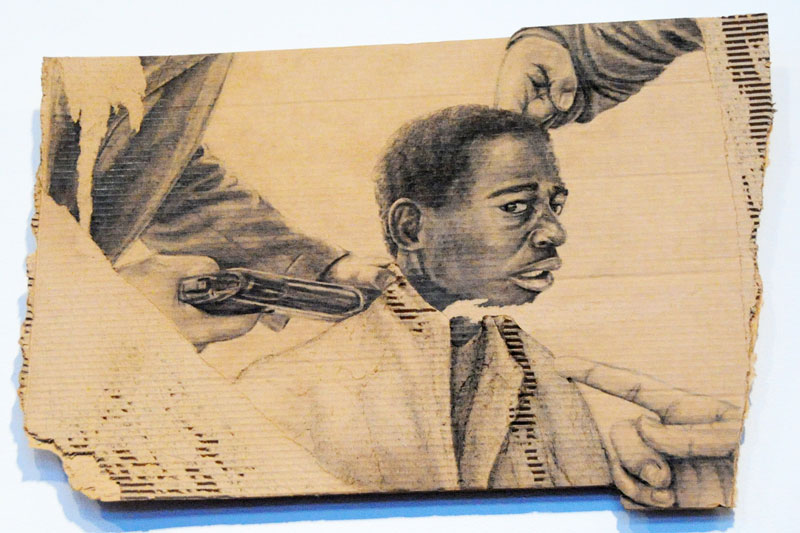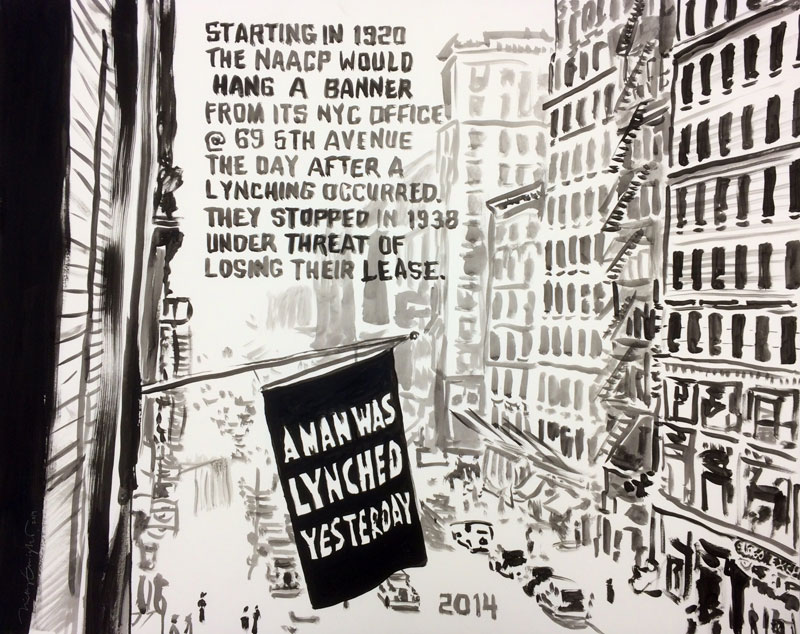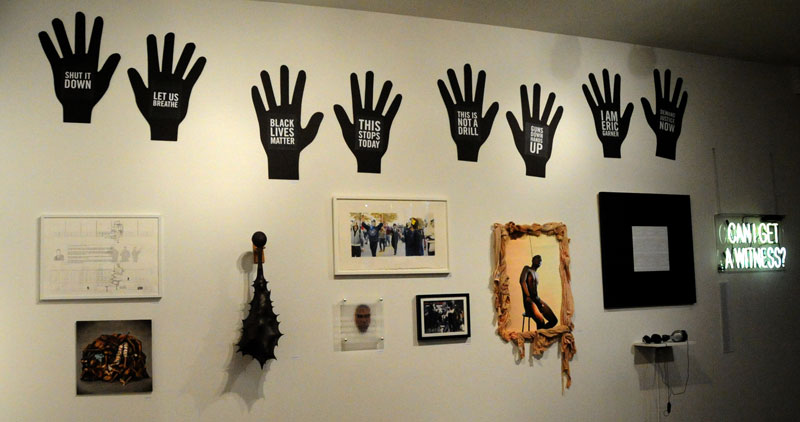RESPOND: Art Exhibit Right on Time and of the Times
by Li Onesto | February 2, 2015 | Revolution Newspaper | revcom.us
The RESPOND Exhibit at Smack Mellon gallery in Brooklyn, New York, January 17-February 22, underscores how extraordinary the last 6-7 months have been in this country. Tens of thousands of people have taken to the streets protesting the epidemic of police murder and the refusal of the government to prosecute the killers—sparking debate among and challenging the thinking of millions more. After a grand jury refused to indict the NYPD cop who choked Eric Garner to death, the directors of Smack Mellon, Kathleen Gilrain and Suzanne Kim, immediately felt the need to find a way to make their space available to artists and members of the community to respond.
A call went out announcing the gallery would be used “to present events, performances and artworks that affirm that black lives matter, express frustration and anger with the institutional racism that enables law enforcement to kill black members of the community with impunity, and imagine creative solutions and visionary alternatives to a broken justice system.” The response was tremendous—with over 600 submissions of artwork, videos, and proposals for various events.
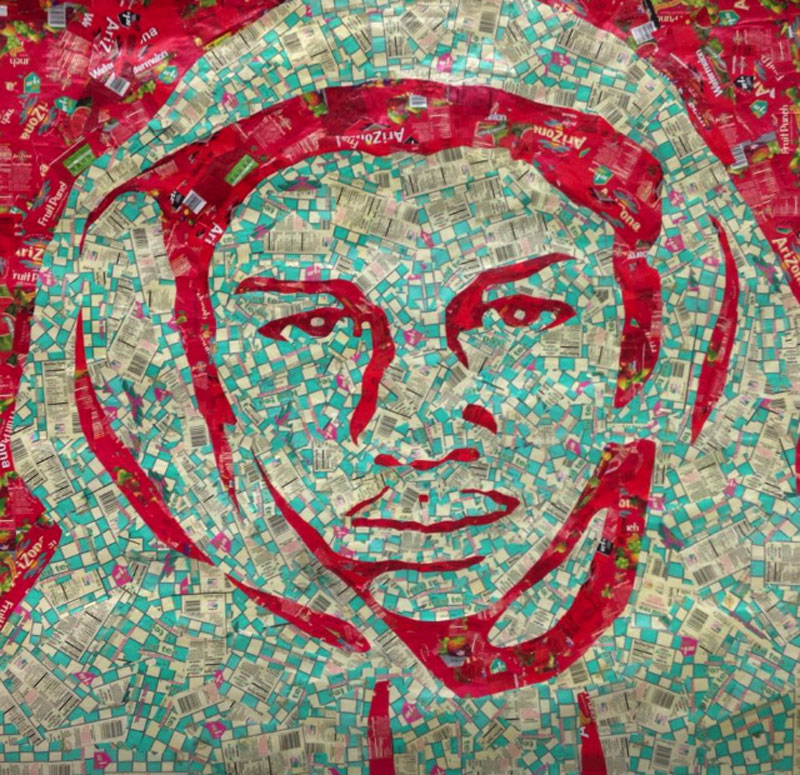
Amanda Barragry:
Trayvon, 2013
Paper, Arizona bottle labels, Skittles wrappers
48" x 48"
Courtesy of Smack Mellon, Brooklyn, NY
Hundreds of people came to the opening of the show on January 17, many more have seen the show since and RESPOND has been reviewed, discussed and given favorable recognition in and beyond the art world, with news coverage and major article, including in the British newspaper The Guardian and the New York Times. It is almost unheard of for a gallery to put together a show this quickly—Gilrain says they, like other art galleries, usually work on a show a year in advance. But for this show, Smack Mellon felt the urgency of the moment.

Jerry Kearns:
Constructive Engagement, 1985
Acrylic on canvas
84" x 83"
Courtesy of Mike Weiss Gallery; Courtesy of Smack Mellon, Brooklyn, NY
As soon as you walk into the 5,000 square foot gallery, it strikes you how much the call for this show struck a felt need among so many artists—who had been doing work on this theme more recently as well as over the years. Most of the artwork is up on the gallery’s two-story high wall, six pieces deep. You can stand way back and just take it all in as a whole and then walk up to appreciate each individual piece. The installation gives you a feeling of how these works are all part of a collective and ongoing RESPONSE to such a great injustice—and at the same time, each work contributes a different artistic and cerebral reaction.
A video by Melissa Rose Cooper of the opening captures the excitement many felt at this unique exhibit. Shawn Carrie, an artist, said, “America wants to forget and put aside the injustice that’s been happening for hundreds of years and people are standing up and saying that Black lives matter and something’s gotta change. And I think this is just one way that the art community, a space that is really dominated by white privilege and by established privilege, is really intervening in a way that makes Black lives visible and the subject matter of this exhibition.” Another artist, Partricia Brace, who has a piece in the show ["Black Lives Matter"] said, “It was just so inspiring to be part of an art show that has a political impact, because so often our exhibitions feel like they’re full of fluff.” Savior Elmundo, who has a piece in the show called “Peanut Gang—Can’t Breathe,” said, “The wall is so powerful, to me it’s balance and all the artists are great, all mixed media. And it tells you when I’m looking at the wall, it’s like I keep staring at it and it’s getting me emotional, just seeing all what we go through in history, from back in the day until now and it’s still happening now.” Nora Segar, a visitor at the opening, said, “I think art can be a powerful force for social change. All these people from all different walks of life are coming together to kind of stand behind these issues. I think it sends a message that even though some of the sort of daily protests have died down, that people are still thinking about these issues, that it still matters.”

Savior Elmundo: Peanuts Gang - Can't Breathe, 2014 Acrylic, enamel, and spray paint 36” x 60” x 1 ½” ; Courtesy of Smack Mellon, Brooklyn, NY
Artists in the show range from those having their work shown in an exhibit for the first time and those who don’t consider themselves professional artists—to more well-known names like Dread Scott, whose work has been exhibited at the Whitney Museum of American Art and the Brooklyn Academy of Music, Mel Chin who has shown at the Museum of Modern Art, and Heather Hart whose work is currently on display at the Brooklyn Museum.
Most of the work has been done in the last couple of years, and especially in response to the murders of Eric Garner and Michael Brown. There are also work referencing police murders going back over the decades, like Amadou Diallo, Renisha McBride, and Nicholas Heyward Jr. Some of the work ranges beyond the borders of the U.S., like the 1985 painting of a vicious, lunging police dog in South Africa by Jerry Kearns. And there are the ones that remind you just how long such genocidal crimes against Black people have been going on in America: There is an image of the huge banner that was hung outside the window of the NAACP’s Fifth Avenue headquarters between 1920 and 1938 that read, “A Man Was Lynched Yesterday” [Nicky Enright].
Nicky Enright:
A Man Was Lynched Yesterday, 2014
Acrylic on board
32” x 40"
Courtesy of Smack Mellon, Brooklyn, NY
The exhibition resonates with the slogans that have come to symbolize these last months of protests. One painting is of a woman with the words, “Hands Up, Don’t’ Shoot!” [Molly Crabapple]. “I Can’t Breath” is incorporated in some of the works, like the painting of a newspaper on a chair [Sandra Koponen] and the mixed media art on canvas by Savior Elmundo of the Peanuts Gang. There is a banner with the words, “NYC Solidarity with Palestine.” Dread Scott’s piece, “Sign of the Times,” done in 2001, features a yellow street sign with the stick images of a cop shooting someone with their hands up with the words: “DANGER—POLICE IN AREA.” There are images of Michael Brown [Albert Areizaga, Mensa Kondo, Ashleigh Sampson, Rudy Shepherd, Megan Tatem] as well as Trayvon Martin [Amanda Barragry].
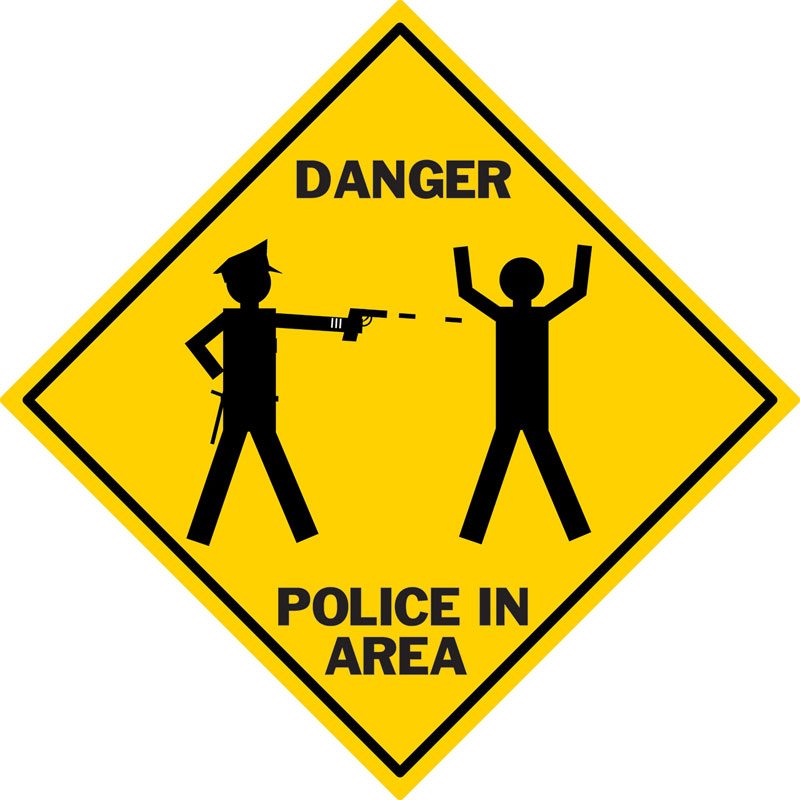
Dread Scott;
Sign of the Times, 2001
Screen print on aluminum
39” x 39”
Courtesy of Smack Mellon, Brooklyn, NY
Some of the works communicate the pain of parents whose children have been stolen. There is a 2004 film still by Tami Gold of the mothers of Anthony Baez, Amadou Diallo and Gary Busch, standing with photos of their loved ones; and the photo of Nicholas Heyward Sr. [David Joseph Jr.] whose 13-year-old son, Nicholas Heyward Jr. was killed by the NYPD 20 years ago, in 1994. And some of the artists themselves have had their own horrible experiences with police brutality.
Roseta DeBerardinis, who did the piece "Strange Fruit, 2011," told the Guardian of what happened one time when her boyfriend came to visit her in New York City: “He was crying, and he told me something bad had happened. His clothes were torn, his lip was busted. He was waiting for the train. He had a ticket. He wasn’t doing anything unlawful. And when he showed the police his Vassar College ID, the cops said, ‘This nigger can read and write.’ Charlayne Hunter-Gault broke that story in the New York Times. He was sodomised. It changes your whole perception of justice, of the police. When I was a kid you went to the St. Patrick’s Day Parade and you were taught to respect them. As you become older, you learn to fear them. When this show came, I wanted to respond. The noose, I wanted to make it beautiful, but I wanted to show the weakness of the noose at the bottom, because whatever their intention, it failed. It’s called Strange Fruit—Billie Holiday did a song. It’s about the black people who were lynched from trees. This is kind of a modern-day lynching.”

Bayete Ross: Smith Glock 9mm from the Taking AIM series, 2010 Archival inkjet with 9mm bullet holes ; Photo: Li Onesto/revcom.us
Nina Berman’s photograph, "Funeral for Jose Luis Lebron," is from 1990. On the gallery’s website Nina gives some background to this image. She tells the story of how a NYPD officer chased and killed 14-year-old Jose Luis Lebron, who was unarmed. The cop claimed Lebron reached for a gun. Four days earlier another cop shot and killed 17-year-old unarmed Louis Liranso and these two shootings touched off protest marches in Brooklyn. Both officers were cleared of any wrongdoing. Berman says: “The 2014 killings of Eric Garner and Akai Gurley, currently in the news, top a long list of similar shootings by the NYPD that have been going on for decades. With each new killing, old cases fall deeper down the list, and are quickly forgotten except by family members and loved ones. Jose Luis Lebron is one of those cases.”
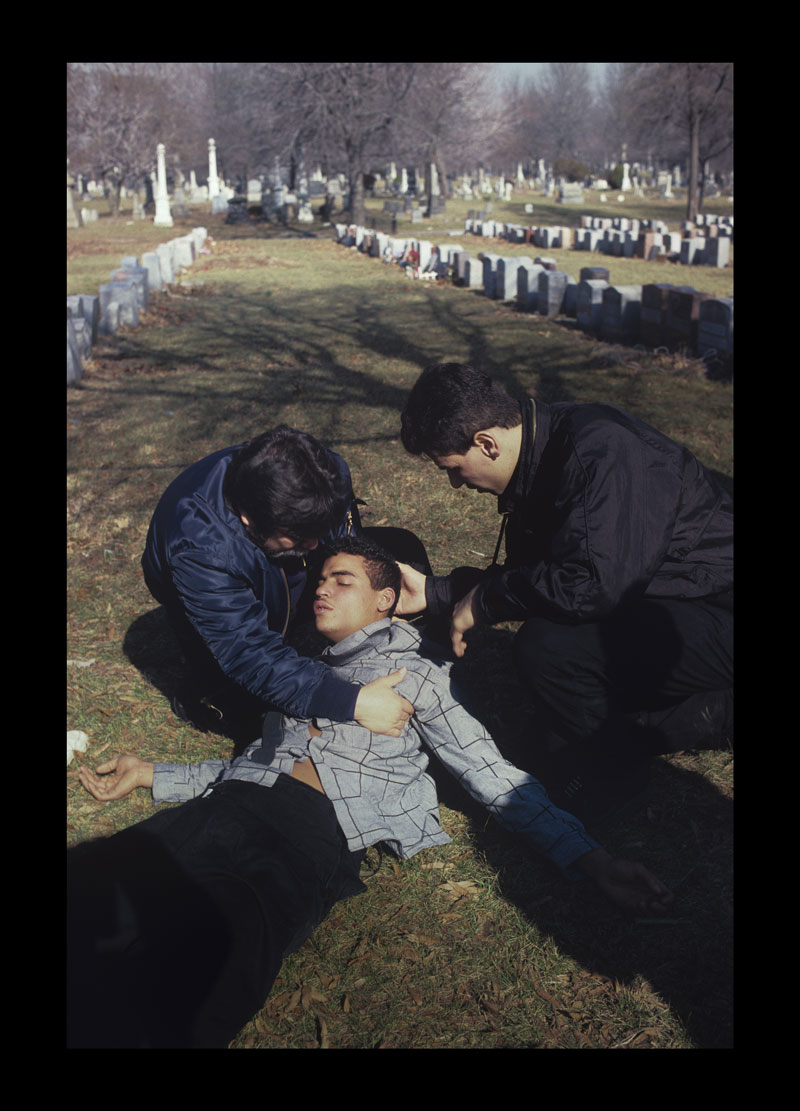
Nina Berman:
Funeral for Jose Luis Lebron, 1990
Digital print mounted unframed
36” x 50”
Courtesy of Smack Mellon, Brooklyn, NY
RESPOND is an important exhibit—right on time and of the times.
Volunteers Needed... for revcom.us and Revolution
If you like this article, subscribe, donate to and sustain Revolution newspaper.

